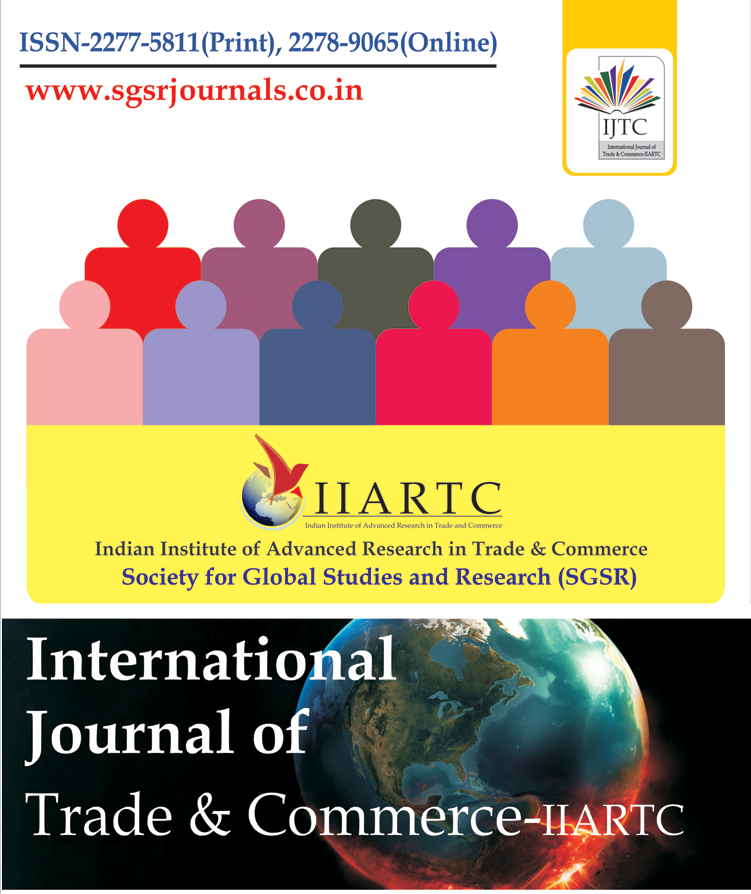Home ⇨ International Journal of Trade & Commerce-IIARTC

International Journal of Trade & Commerce-IIARTC
Impact Factor (IF):5.135 (COSMOS), IF:7.249 (ISRA), IF:3.721 (ISI)
ISSN:2277-5811 (P), ISSN:2278-9065 (O)
Frequency: Half Yearly
Targeting of Food Subsidy in India
The amount of food subsidy depends on a number of factors such as procurement volume, public distribution system off take, storage levels and efficiency, gap between issue price and procurement price, handling efficiency of the various organizations and interest charges. Public distribution system was made a universal scheme in 1970s, but after the fiscal crisis of 1990s, major changes in food policy have been motivated by the goal of expenditure reduction to reduce the fiscal deficit. As a result, food subsidies were reduced and targeting was introduced in reforms of 1991. With a reduction in explicit food subsidies, structural adjustment usually entails a reduction in implicit subsidies and the result of this was food price inflation. Along with that liberalization eroded the objective of self sufficiency in food production. In 1992, the revamped public distribution system was introduced which involved targeting specific areas. Under revamped public distribution system special preference were given to the population who live in most difficult places of the country, like desert area, tribal areas, drought-prone areas, hilly areas and urban slums. Revamped public distribution system was introduced so that poorer consumers can access the subsidized grains; range of commodities supplied by fair price shops can be increased, selected commodities can be provided at prices lower than general public distribution system and coverage of poor population in targeted areas can be increased. This paper throws light on the need of subsidy on food and grains in India and its effects on Indian Economy.
Author:Anjali Saini*a, Mamta Choudharyb, & Rakhi Solankic
Abstract:The amount of food subsidy depends on a number of factors such as procurement volume, public distribution system off take, storage levels and efficiency, gap between issue price and procurement price, handling efficiency of the various organizations and interest charges. Public distribution system was made a universal scheme in 1970s, but after the fiscal crisis of 1990s, major changes in food policy have been motivated by the goal of expenditure reduction to reduce the fiscal deficit. As a result, food subsidies were reduced and targeting was introduced in reforms of 1991. With a reduction in explicit food subsidies, structural adjustment usually entails a reduction in implicit subsidies and the result of this was food price inflation. Along with that liberalization eroded the objective of self sufficiency in food production. In 1992, the revamped public distribution system was introduced which involved targeting specific areas. Under revamped public distribution system special preference were given to the population who live in most difficult places of the country, like desert area, tribal areas, drought-prone areas, hilly areas and urban slums. Revamped public distribution system was introduced so that poorer consumers can access the subsidized grains; range of commodities supplied by fair price shops can be increased, selected commodities can be provided at prices lower than general public distribution system and coverage of poor population in targeted areas can be increased. This paper throws light on the need of subsidy on food and grains in India and its effects on Indian Economy.




